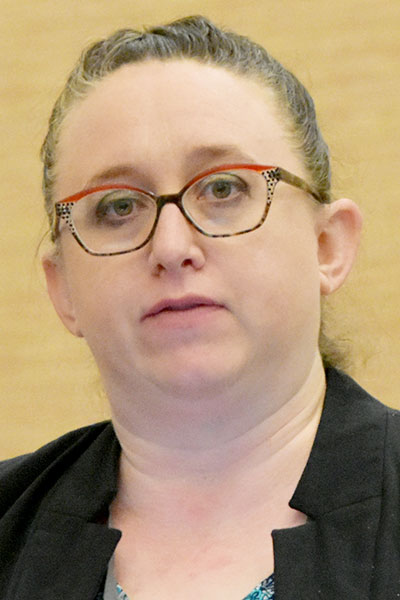New insights into pulmonary hypertension (PH) from the PVDOMICS precision medicine registry are redefining the understanding of the disease. The highly protocolized clinical phenotyping and comprehensive omics analysis has highlighted how factors such as race, ethnicity, social determinants of health, and environmental exposures influence risk for PH and quality of life for those diagnosed with PH.
Experts discussed these findings during the CHEST 2024 session, Deep Phenotyping of Pulmonary Vascular Disease: PVDOMICS, on Monday in Boston.
Environmental exposures and PH phenotype

“We are all aware that exposures are important to PH, and, in fact, we even classified PH talking about exposure,” said Jane A. Leopold, MD, Associate Professor at the Harvard Medical School and Director of the Women’s Interventional Cardiology Health Initiative at Brigham and Women’s Hospital.
“For example,” she said, “we all know that there’s different types of drug- and toxin-induced PH in Group 1. We know altitude is an exposure that’s prevalent in the [patients with Group 3]. This is always in the back of our mind, but we don’t really stop and think about all the different exposures that we can have and how this can affect being on the continuum between being at risk for PH and actually being diagnosed with PH.”
Dr. Leopold detailed PVDOMICS findings on how personal, external, and biological exposures—a trio collectively referred to as the exome—affected individuals with PH, healthy individuals in a control group, and individuals in a comparator group.
“We did find this relationship between industrial solvents, particularly asbestos, and PH and our participants,” she explained, adding that, not surprisingly, there also seemed to be an emerging trend between exposure to mold and PH status.
Researchers were surprised to find an inverse association between exposure to animals—including cats, dogs, horses, and birds—and PH status. There also doesn’t seem to be an association between exposure to fine particulate matter (particulate matter smaller than 2.5 μg in diameter) pollutants and mortality in the overall population, but the risk increases for populations with lower incomes, Dr. Leopold said.
Racial/ethnic differences across the spectrum of PH

In an examination of the relationship of race and ethnicity to PH disease severity, function, and mortality, Franz Rischard, DO, MS, Professor of Medicine, Division of Pulmonary and Critical Care, Director of the Pulmonary Hypertension Program, and Associate Dean of Clinical and Translational Research at the University of Arizona, presented research that suggests poverty may have a greater impact on health-related quality of life (HRQOL) than ethnicity or education.
PVDOMICS data shows that Hispanic patients had worse HRQOL issues than other racial groups. “We can see there is a difference in Hispanic patients relative to the disparities,” Dr. Rischard said, explaining that patients who identified as Hispanic had a higher score, or a greater disability, on the Minnesota Living with Heart Failure Questionnaire.
However, it appears that these disparities may be related to socioeconomic factors rather than ethnicity.
“The Hispanic category is no longer significant after placing poverty in the model…” Dr. Rischard said. “But it is quite a dramatic effect.”
Still, he advised using extreme caution when using race and risk calculators and reference equations.
“Perhaps even more important is the premise that racial disparities are modifiable through social determinants, or where a patient lives and works, rather than necessarily some sort of genetically determined or immutable way in which those factors influence their health disparities,” Dr. Rischard said. “I feel that precision medicine being specifically attuned to a patient’s and population’s heterogeneity is directly pertinent to these questions that we’re discussing. However, it’s very important—a priority—to examine some of those questions ahead of time and test hypotheses appropriately.”
Deep phenotyping across the PH spectrum

The deep phenotyping undertaken by PVDOMICS was made possible by its unique study design that included all forms of PH, including mild PH, as well as disease comparators and healthy controls, and blood samples, said Anna R. Hemnes, MD, Professor of Medicine and Director of the Division of Allergy, Pulmonary and Critical Care Medicine at Vanderbilt University.
Dr. Hemnes added that more than a dozen papers on pulmonary vascular disease based on analysis of PVDOMICS data have currently been accepted for publication. A September 2024 paper in CHEST® Pulmonary examines the association between male sex and right ventricular (RV) function across the spectrum of pulmonary vascular disease.
“Prior to this, we knew that in PAH, men tended to have worse RV function and worse survival,” she said, “but it actually turns out, according to [Nicholas Shelburne’s] data, that males with all forms of PH have worse heart function, particularly actually at lower pulmonary vascular resistance, and that correlates with worse mortality for males with all forms of PH, suggesting that maybe a unique feature of male sex.”
Advanced hemodynamics

Rebecca R. Vanderpool, PhD, Assistant Professor in the Division of Cardiovascular Medicine at The Ohio State University, discussed the advanced hemodynamics in PVDOMICS, including nitric, exercise, and right ventricular-pulmonary artery coupling.
“In PVDOMICS, the RHC protocol is very extensive,” Dr. Vanderpool said. ”There’s a lot of data. It lends itself to some really unique, in-depth investigations and opportunities to look at further associations with pulmonary physiology, chest imaging, cardiac physiology across PVDOMICS.”
Be Part of CHEST 2025
Save the date for the next Annual Meeting, October 19 to 22, 2025, in Chicago. If you were inspired by the world-class educational sessions you attended in Boston, learn how you can help shape next year’s curriculum. Submit topic ideas from areas you’re passionate about, topics affecting your practice, or new technologies you’d like to learn more about by Wednesday, December 4, at 2 pm CT.





